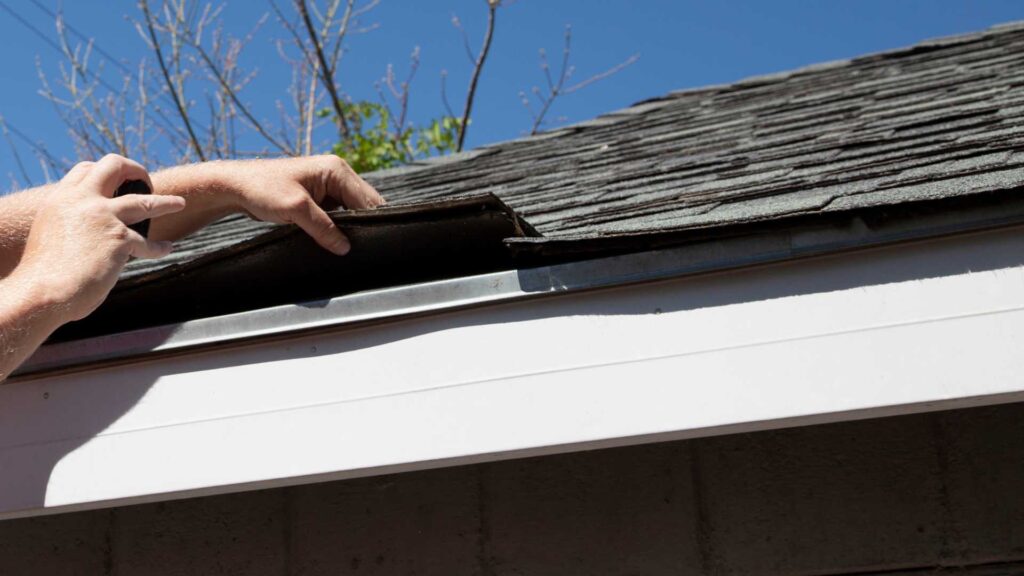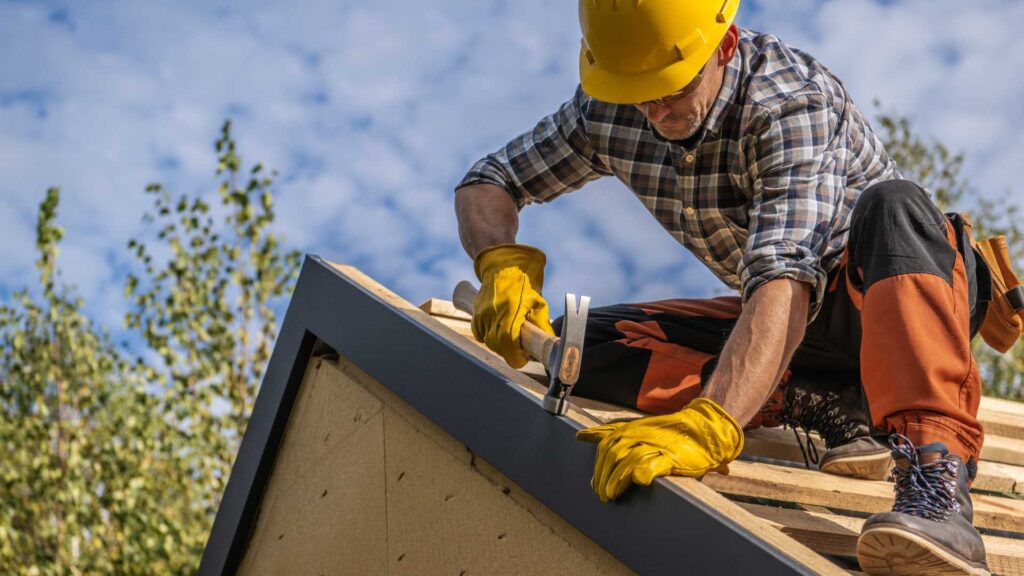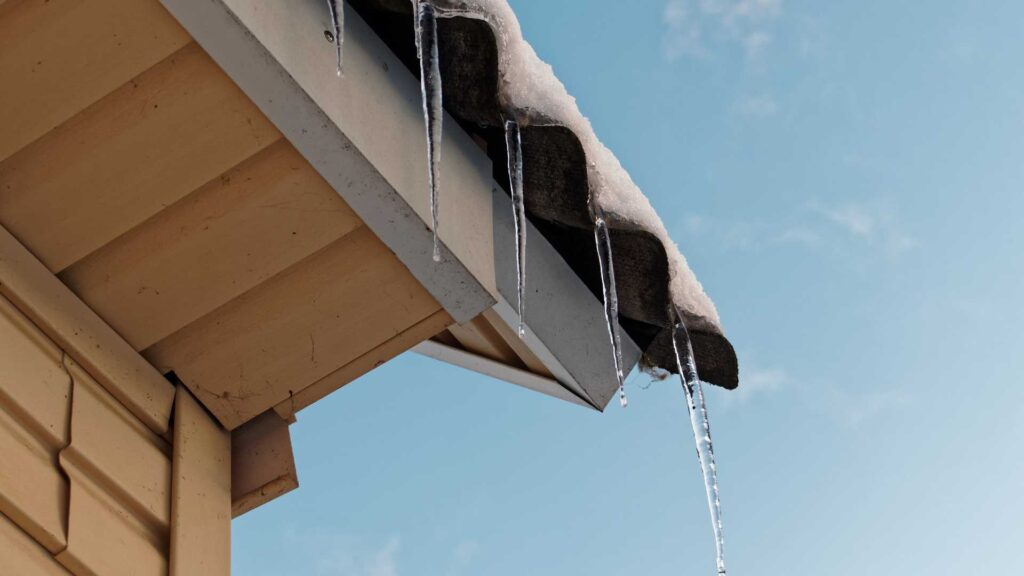Key Highlights
- Drip edges are essential for protecting your Mobile home from water damage caused by heavy rain and storms.
- They prevent water from seeping under the roof, which can lead to rot, mold, and structural damage.
- Drip edges come in various materials, such as aluminum, galvanized steel, and copper, each with its pros and cons.
- It’s crucial to choose the right type of drip edge for your metal roof, considering factors like roof pitch and climate.
- Proper installation by a qualified roofing contractor ensures your drip edge functions effectively and lasts for years.
Introduction
Protecting your home in Mobile, AL from water damage is very important. Our area often sees a lot of rain. While metal roofing is strong and lasting, the edge of the roof can be weak against water getting in. This is where drip edges play a key role. In this guide, we will look at why drip edges matter for metal roofs. We will also discuss the different types that are available and what to think about when picking the right one for your home in Mobile.
Understanding the Functionality of Drip Edges
A drip edge may look like a small part of the edge of your roof, but it actually has an important job. It helps to move water away from your roof. Instead of letting water collect on your roof or get under the edges, the drip edge directs it away from weak spots.
This easy change in water flow helps protect your fascia, soffits, and even your home’s foundation from water damage. By keeping these areas dry, drip edges stop rot, mold, and other expensive problems that can happen when moisture sticks around for too long.

The Role of Drip Edges in Roof Protection
Imagine this: rain is falling hard on your metal roof. If there is no drip edge, the water will just flow off the edge and may allow pests to enter your home. It may seep under the roofing material and into your home’s structure. This can cause many problems, like rotting wood, damaged insulation, and even weaken your home’s structure.
A drip edge helps by redirecting the water away from the edges and into the gutters, preventing any rainwater dripping into your home. Instead of getting into your home, the water is safely channeled away. This protects your investment and gives you peace of mind.
The drip edge also acts as an extra layer of protection. It works with other roofing parts, like underlayment and flashing, to create a strong barrier against harsh weather.
How Drip Edges Enhance the Durability of Your Metal Roof
Investing in a metal roof for your mobile home is a smart decision. It is known for being long-lasting. But even the toughest metal roofing needs extra help in weak spots. Drip edges provide this help. They reduce potential damage from water getting in.
If you don’t have a drip edge, water can sneak under your roofing material, including shingles. This can cause rust, corrosion, and quick decay of your metal roof. Over time, you might face expensive repairs or even have to replace the roof early.
Putting in a drip edge adds protection. This helps to keep your investment safe. It makes sure your metal roof is strong and performs well for years.

The Importance of Installing a Drip Edge in Mobile, AL
Living in Mobile means being ready for all kinds of weather, from hot sun to heavy rain. Metal roofs are strong, but because of the tough climate here, adding a drip edge is very important.
Drip edges give you that extra shield against Mobile’s extreme weather. They help prevent water damage and keep your home safe for a long time. Picking the right kind of drip edge for this climate can really help your roof last much longer.
Combatting Mobile’s Climate: Water and Wind Protection
Mobile has a special climate. It has high humidity, lots of rain, and sometimes tropical storms. These weather conditions can be tough for homeowners. That’s why having a drip edge is very important. It helps keep your home safe from water getting in and helps your metal roof last longer.
A properly installed drip edge is your first defense against heavy rain and wind. It pushes water away from the roof deck and directs it into the gutters. This way, water does not sneak under the roofing material and cause damage.
Drip edges can also stop wind uplift, which can happen during strong storms. Wind uplift is when the wind gets under the roofing material and pulls it up. This can cause a lot of damage. By keeping the edges of the roofing tight, drip edges help stop wind uplift and keep your roof safe, ideally overlapping by an inch.
Meeting Local Building Codes and Standards
Understanding local building codes is very important for any home project. This also includes putting in a drip edge, which may have sharp edges that require attention. Many places require this for new roofs and replacements to keep buildings safe and strong against local weather.
Before you start putting on or replacing your metal roof, you need to learn about the building codes in Mobile, AL. It is a good idea to talk to a qualified roofing contractor for help with these rules.
Even if the codes don’t say you must use one, choosing to install a drip edge is a smart decision. It gives good protection and peace of mind for your home in Mobile. By following these codes, you help keep your property safe and may avoid problems later on.

Types of Drip Edges Suitable for Metal Roofs
Not all drip edges are the same, especially with metal roofing. Metal roofs have special needs for drip edges to work well and stop water damage.
Here are some common drip edge shapes used for metal roofs: L-type, C-type, T-type, and F-type. Each type has its own features and benefits. It is important to pick the right one for your roof and the weather in Mobile.
Analyzing the L-Type and C-Type for Mobile Homes
When picking a drip edge profile for your metal roof, consider the type of metal and the L-type and C-type are two common options. They each have their own benefits. Knowing how they differ can help you choose wisely:
- L-Type Drip Edge: This profile looks like the letter “L”. It is a flexible option that works well with many roofing materials, including metal. It effectively moves water away from the edges of the roof and into the gutters. This helps prevent water from getting underneath the roofing material.
- C-Type Drip Edge: Made for metal roofs, the C-type profile has a smooth, curved shape that fits nicely with the roof panels. It gives a neat and finished appearance. This type is great for roofs that have exposed fasteners, adding more protection against leaks.
The best option for your mobile home will depend on your metal roof’s design and how much protection you need.
When to Consider T-Type and F-Type Drip Edges
While L-type and C-type drip edge profiles are often used for metal roofs, there are times when you may need the features of T-type and F-type edges.
- T-Type Drip Edge: This type gives extra protection for metal roofs, especially in places with a lot of rain. It has a vertical leg that goes under the roofing material. This creates a barrier to stop water from getting under the roof deck.
- F-Type Drip Edge: Also called a gutter apron, this type is great for metal roofs with gutters. It has a longer flange that hangs over the gutter. This offers better defense against wind-driven rain.
Picking a good drip edge is just as important as choosing the right profile. Always choose trusted brands and strong materials that can handle Mobile’s weather. This will keep your metal roof safe for a long time.
Choosing the Right Material for Your Drip Edge
Once you know the right profile, the next step is to pick a strong material for your drip edge. Popular choices for metal roofs are aluminum, galvanized steel, and copper.
Each material has its own benefits. Some are affordable, while others resist corrosion or look nice for a long time. Knowing these differences will help you make a smart choice that fits your budget, your home’s style, and how long you want it to last.
Pros and Cons of Aluminum vs. Galvanized Steel
Aluminum and galvanized steel are popular choices for drip edges due to their durability and resistance to corrosion. However, choosing between the two depends on several factors specific to your needs and the design of your home.
Aluminum is a lightweight and affordable option that resists rust naturally. It requires minimal maintenance and is readily available in various colors to match your roofing material. On the other hand, galvanized steel is exceptionally strong and durable, offering enhanced protection against dents and impacts, making it suitable for areas prone to hailstorms or high winds.
Here’s a table summarizing the pros and cons of each material:
| Material | Pros | Cons |
| Aluminum | Lightweight, affordable, rust-resistant, available in various colors | May dent more easily than galvanized steel |
| Galvanized Steel | Exceptionally strong, highly durable, resistant to dents and impacts | Heavier and more expensive than aluminum |
Considering these factors alongside the architectural style and the overall appeal of your home can help determine the best material for your drip edge.
The Aesthetic Appeal of Copper Drip Edges
While aluminum and galvanized steel are good choices for drip edges, copper adds a nice look and classic charm to your home’s exterior. Copper is known for its unique reddish-brown color and is resistant to extreme weather conditions. Over time, it develops a lovely patina that adds character and style to your home.
Copper is not just about a pretty look; it is also very strong and resistant to rust. This means it lasts a long time and can handle tough weather. It needs very little care, which makes it a smart choice for homeowners who want both beauty and durability.
Although copper can be more expensive at first compared to other materials, its long life, low care needs, and ability to improve your home’s look make it a great option.

Conclusion
In summary, it is important for homeowners in Mobile, AL to understand the role of quality drip edges on metal roofs. These additions help protect your roof from the weather, increase its lifespan, and meet local laws. Choosing the right type and material for the drip edge, like L-Type or copper, can make your roof stronger against challenges from Mobile’s climate. Focusing on both the function and look of drip edges will not only keep your investment safe but also improve the appeal of your home. If you need expert help with drip edge installation, ask for quotes from professionals like Metal Roof Mobile AL who specialize in metal roofing solutions.
Frequently Asked Questions
What Makes a Drip Edge Essential for Metal Roofs in Mobile?
A drip edge is important for metal roofing systems in Mobile. It helps create a smooth transition by guiding water away from the edge of the roof. The water moves into the gutter, which protects the fascia, soffits, and the structure of your home.
Follow our social accounts: Youtube, Twitter, Facebook, Instagram & Tik Tok
